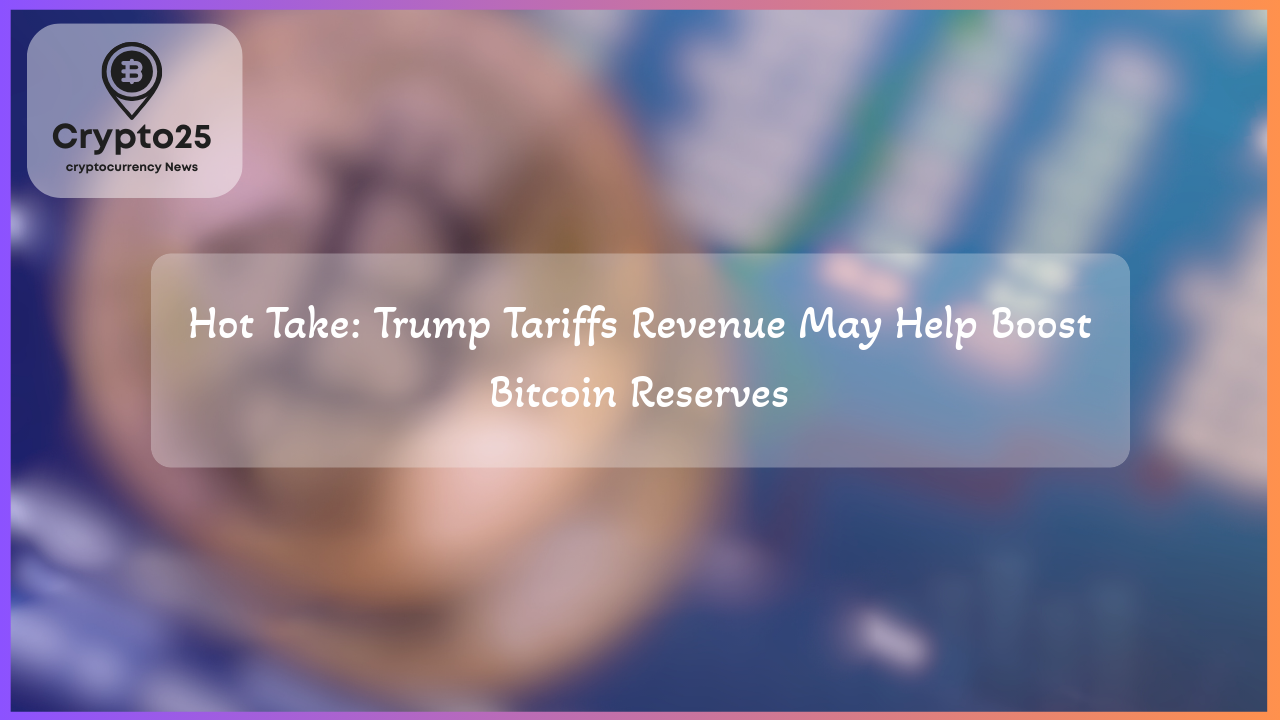
The U.S. government is reportedly exploring innovative financial strategies to build a Bitcoin treasury. Leveraging revenues from Trump-era tariffs, this bold initiative aligns with legislation aiming to create a substantial national crypto reserve. A senior presidential adviser has confirmed these plans, signaling a potential pivot in American fiscal policy that integrates digital assets into the global economic framework.
### U.S. Considers Using Tariff Revenue to Build a Bitcoin Reserve
Bo Hines, the executive director of the Presidential Council of Advisers for Digital Assets, recently revealed plans for the government to acquire Bitcoin (BTC) using revenue from Trump-imposed tariffs. Speaking in an April 14 interview with crypto entrepreneur Anthony Pompliano, Hines stated that “everything’s on the table” when it comes to budget-neutral solutions for purchasing Bitcoin. This approach avoids increasing national debt while offering a forward-looking, strategic expansion into digital assets.
The government’s plan prioritizes sourcing funds without imposing additional tax burdens. Another innovative funding channel under review involves revaluing U.S. Treasury gold certificates. These certificates are presently valued at $43 per ounce, a staggering contrast to the modern gold market price of $3,200 per ounce. If revalued, the resulting paper surplus could fund substantial Bitcoin purchases without the need to liquidate the government’s gold reserves.
### Strategic Digital Asset Reserves Could Transform U.S. Fiscal Policy
The administration envisions this Bitcoin reserve as a long-term strategic asset rather than a short-term trading or speculative tool. Bo Hines emphasized the importance of acquiring Bitcoin in budget-neutral ways that do not increase the tax burden on American citizens. This initiative ties deeply with the Bitcoin Investments and Treasury Oversight Normalization (BITCOIN) Act of 2025.
The proposed legislation, backed by influential lawmakers such as Senator Cynthia Lummis, seeks to authorize the acquisition of one million BTC over five years. The U.S. government could utilize assets it already possesses, such as cryptocurrencies seized in criminal investigations, as part of this accumulation strategy. This approach demonstrates the administration’s commitment to establishing a strong national crypto infrastructure without compromising economic stability.
Additionally, the administration is preparing to release a broader digital asset strategy by summer 2025. This framework is expected to address key issues, including crypto innovation, regulation of decentralized finance (DeFi) entities such as staking platforms, and promotion of U.S. dollar-backed stablecoins on a global scale.
### Current Bitcoin Market Trends and Price Recovery
The global Bitcoin market has also seen dynamic movement in response to these developments. Recent Trump tariff concerns caused Bitcoin prices to temporarily dip below $80,000, reaching a weekly low of approximately $75,000. However, the cryptocurrency has since rebounded and is currently trading at around $85,505. Its recovery past the 50-day moving average suggests short-term bullish momentum, although resistance levels near $88,000 could pose challenges for further gains.
| Title | Details |
|---|---|
| Market Cap | $1.2 Trillion |
| Current Bitcoin Price | $85,505 |
Despite short-term fluctuations, analysts believe the strategic pivot toward cryptocurrency by a nation as influential as the United States could provide long-term bullish sentiment for Bitcoin and the broader market. Long-term feasibility of this strategy, however, will depend heavily on successful implementation and regulatory clarity.
### The Long-Term Impact of a National Bitcoin Reserve
A national Bitcoin reserve would be unprecedented, solidifying the U.S. as a leader in the global crypto economy. Such a move could encourage international allies and financial institutions to embrace digital assets as an integral part of future financial planning. Furthermore, using Bitcoin to diversify national reserves reinforces the asset’s growing importance as “digital gold,” potentially serving as a hedge against inflation and geopolitical instability.
This bold proposal, if actualized, will likely spark significant debate across economic, political, and technological spheres. It will also serve as a litmus test for how traditional economies can integrate with blockchain technology in meaningful ways. While challenges and uncertainties remain, the U.S.’s proactive approach signals that the integration of cryptocurrencies like Bitcoin into national strategies is no longer a fringe concept—it is a real possibility reshaping the global financial landscape.
